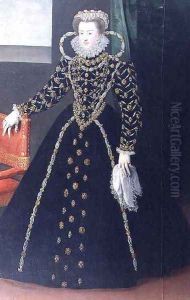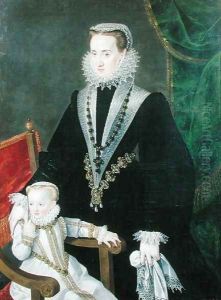Georges van der (Jorge de la Rua) Straeten Paintings
Georges van der Straeten, also known as Jorge de la Rua, was a Belgian sculptor born in 1856. Though less known under the pseudonym Jorge de la Rua, his work under his real name garnered significant acclaim during his lifetime. Van der Straeten trained as a lawyer before pursuing his passion for sculpture, a field in which he would make a lasting mark. His career is a testament to the vibrant artistic scene of the late 19th and early 20th centuries, particularly in Paris, where he spent much of his professional life. Van der Straeten's work is characterized by its focus on busts and figures that often captured the elegance and nuances of Parisian society. His sculptures, which frequently featured women and children, were celebrated for their exquisite detail, expressive faces, and the delicate treatment of materials like bronze. He had a particular talent for capturing the fashion and demeanor of the Belle Époque, an era known for its optimism, regional peace, economic prosperity, technological, scientific, and cultural innovations in the Western world. Van der Straeten exhibited his work widely, including at the Salon des Artistes Français in Paris, where he received numerous accolades for his contributions to art. Despite the broad appeal of his work during his lifetime, Georges van der Straeten's legacy has been somewhat overshadowed by his contemporaries. Nevertheless, his sculptures continue to be appreciated by collectors and art historians for their technical skill and the insight they provide into the period's social and cultural milieu. Van der Straeten died in 1941, leaving behind a body of work that remains significant for its artistic and historical value. His contributions reflect the rich tapestry of European art at the turn of the century and continue to be studied for their representation of the Belle Époque's distinctive character.

